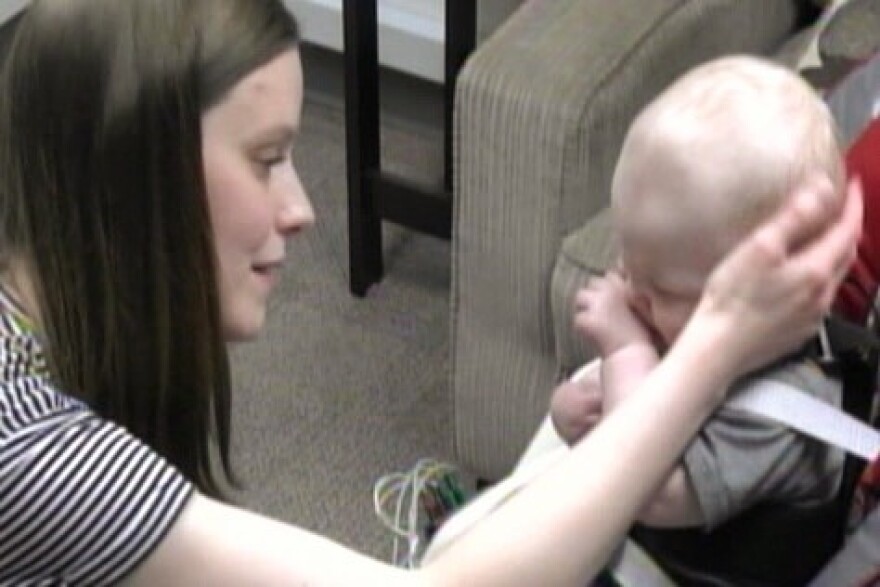This archival content was originally written for and published on KPCC.org. Keep in mind that links and images may no longer work — and references may be outdated.
Mothers' responses to babies in distress can help predict future bonds

Mothers' responses to their babies in times of stress can predict how strong the bond between mom and child will be many months down the road, new research out Tuesday shows.
The new study, published in the journal "Child Development," focuses on the emotional and physiological response of mothers during times of distress. The study looked at 127 pairs of ethnically and economically diverse moms and babies and monitored their interactions at six and 12 months.
"It was expected that mothers responding in more challenging caregiving contexts in particular would be predictive of infant attachment," said Ashley Groh, lead author of the study. "Because the relationship is especially about infants' confidence in their caregivers in times of uncertainty, in times of challenge."
Researchers started by putting 6-month-olds and their moms through the famous Still Face experiment. In the experiment, mothers sit across from their babies and after a few minutes of normal play, moms have to stop and stare straight ahead with an emotionless, still face – no matter how the babies coo or call out. The babies lose it. Then, after a couple of minutes, the moms can comfort them and resume play.
As part of the new study, researchers monitored the heart rate and breathing of the moms while their babies were in distress and then further examined the two particular responses mothers had that led to insecure bonds down the road.
Moms who were unable to regulate their physiological and emotional response – rather than remaining calm and positive – were more likely to have babies who didn't seek them out during moments of distress six months later. This is a form of insecure attachment known as avoidant attachment.
Mothers who were more neutral and withdrawn more likely had 1-year-olds who were inconsolable when distressed, perhaps trying to get attention. This is known as resistant attachment.
Researchers assessed this by putting the pairs through the Strange Situation procedure, which involves a series of separations and reunions.
"If we want to promote positive child development, then we want to know what leads to these patterns of attachment that are linked with these negative, long-term outcome," said Groh, an assistant professor at the University of Missouri, Columbia.
Groh doesn’t want these findings to keep parents up at night. She just wants them to know that babies can sense what’s going on inside.
"Over time you can get better with it," she said, "and as you become more aware of it, it might help you to respond better and lead to a better relationship with your infant."
